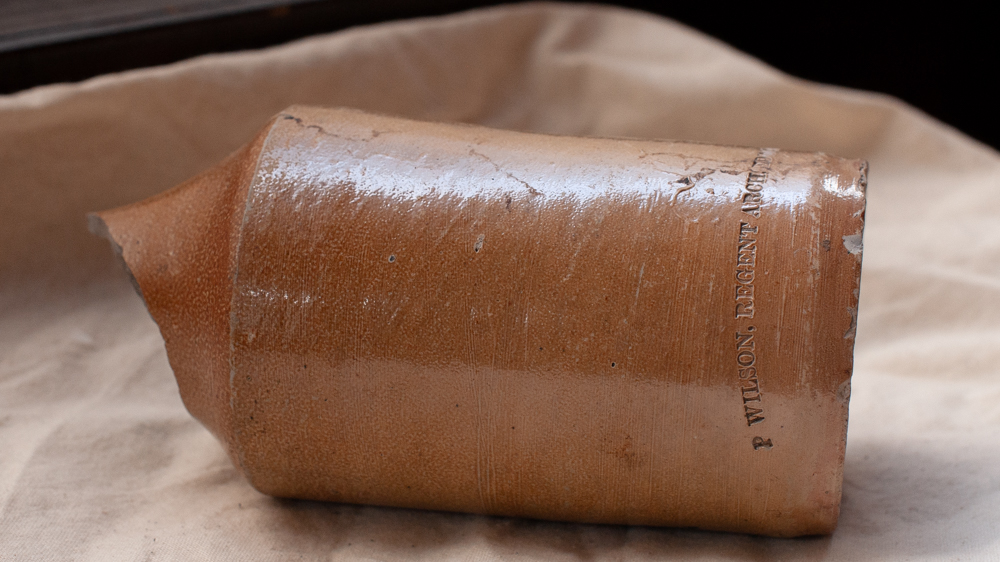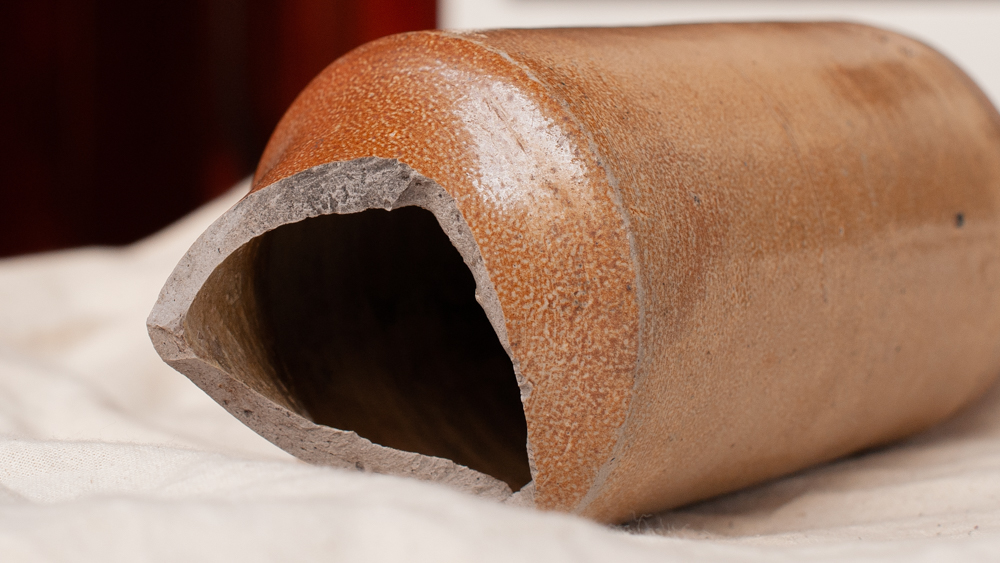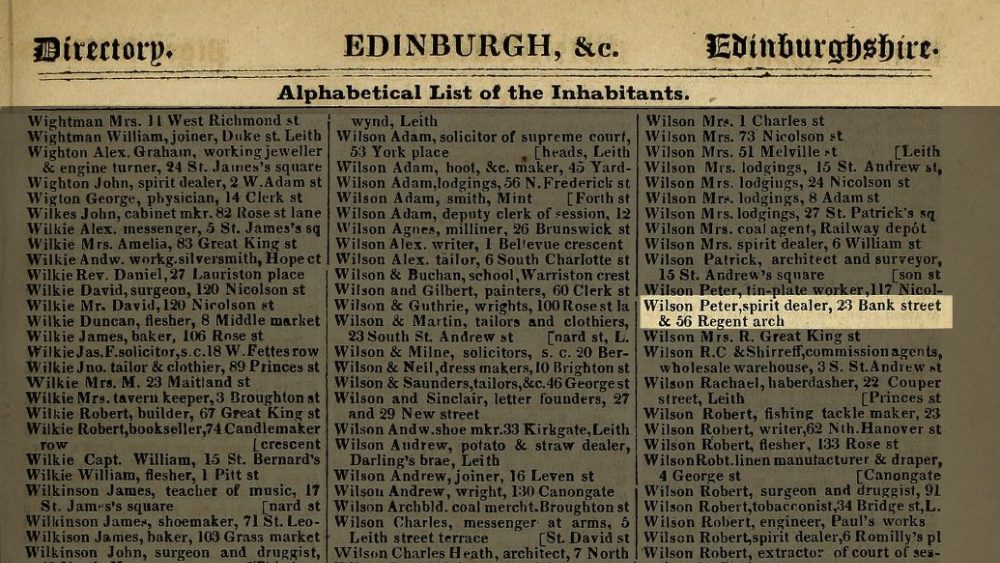Secrets of a Stoneware Bottle
31st Aug 2023
Descend into the secrets of the city’s past on an Edinburgh history tour of the Blair Street Underground Vaults.
In the dark corners of Edinburgh’s vaults, you’re likely to find a number of things: rubble, a few spiders, the remains of shoes, and many, many bottles.
Of the artefacts uncovered from the Blair Street Underground Vaults is the stoneware bottle pictured above. You can examine similar pieces in-person at the Vaults Museum's Touch Table, which you can visit at the end of an underground history tour. This bottle, like most of the items coming from the vaults, brings with it a mixture of mystery and enlightenment.
A stoneware bottle
The bottle fits nicely in hand, somewhere around the size of a modern-day can of Irn Bru, especially since it’s now missing a large portion of its once-tall neck. It’s nearly the same colour as the drink can, too, with its orange-y tinge.
The bottle feels relatively smooth to touch, textured but not at all rough. Except for the broken top, which has cracked in a way familiar to anyone who has ever dropped a ceramic bowl and had to clean up the pieces afterwards. The break allows you to look inside, though, which appears more porous.

There’s nothing on the outside to indicate a paper label was ever attached, as we expect on bottles nowadays. Instead, expertly stamped into the lower portion, reads ‘P. Wilson, Regent Arch, Edinburgh.’ The text itself is perfectly arched, as if mimicking the bridge that it describes.
This bridge is not, as you might expect, the South Bridge where the bottle was excavated. Regent Arch is part of Regent Bridge, just to the east of Princes Street and about a 10-minute walk from the Blair Street Underground Vaults where this bottle spent most of its life.
What are these vaults and why are there so many artefacts?
Completed in 1788, Edinburgh’s South Bridge extends over the valley to the south of the Royal Mile. 18 of its 19 arches, sandwiched between buildings, were divided up and rented off to the shops whose storefronts decorated the bridge above. For decades, these underground spaces were used as storage facilities, workshops, and even taverns (as well as some other less legal uses). They were dark, stuffy, and damp.
Eventually, around the 1860s, the entrances were bricked up and the vaults forgotten by the city that had created them, until their accidental rediscovery in the 1980s.
What does this bottle tell us?
We might not have all the answers to the life of this bottle, but let’s take a look at the answers we do have.
The stamp is a natural place to start, but let’s take a quick moment to study the bottle itself. Stoneware bottles in the 19th century were more durable than glass, with the added benefit of keeping the contents at a consistent temperature. They are fired at high temperatures, which vitrifies the material and creates a water-proof vessel. So, as expected, the bottle was probably used for some kind of drink.
Which is where P. Wilson of Regent Arch comes in. Flipping through 200-year-old street directories—which may sound like a tedious chore for some but a great time for others—brings us to Wilson Peter, spirit dealer, 23 Bank Street & 56 Regent Arch.

A Mr. Peter Wilson at Regent Arch can be found in decades of Pigot and Co.'s national commercial directories, from the 1830s to the late 1870s and beyond, eventually turning into Wilson Peter & Co. tea, wine and spirit merchants.
So what does this all tell us about the bottle? Well, it’s a well-crafted 19th-century stoneware bottle that held some kind of spirit, sold by P. Wilson of Regent Arch in Edinburgh, which made its way into the Blair Street Underground Vaults sometime before the 1860s.
It’s hard to do justice to an artefact in only words and photographs; much of it is impossible to capture in these two dimensional ways. To make these artefacts available to the public, we’re offering two ways for you to interact with them in-person: in the Vaults Museum at the end of certain tours.
Want to see Edinburgh’s darkest secrets for yourself? Descend into the Blair Street Underground Vaults on an Edinburgh history tour and uncover their dark past.

